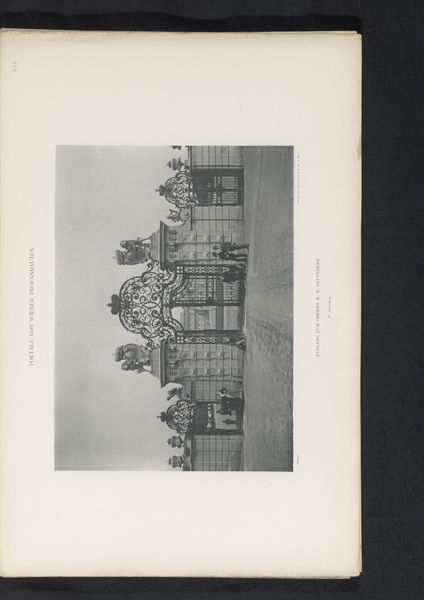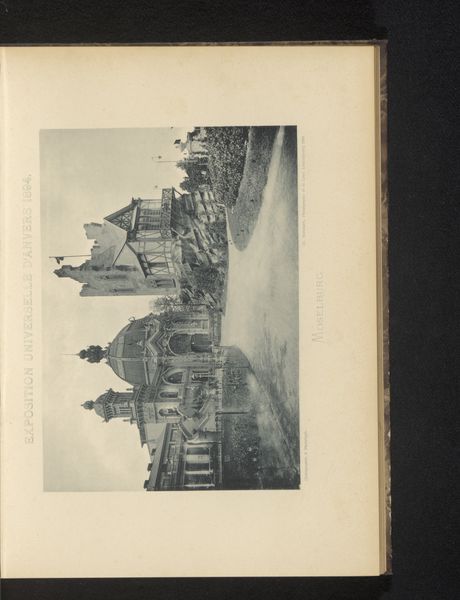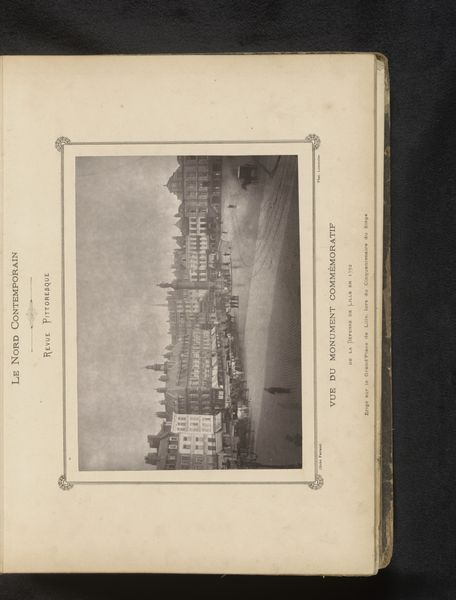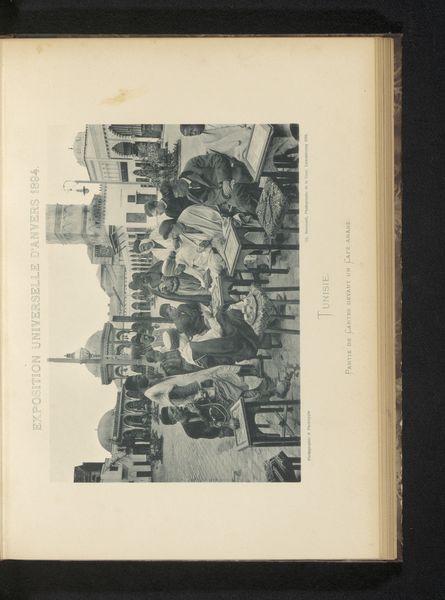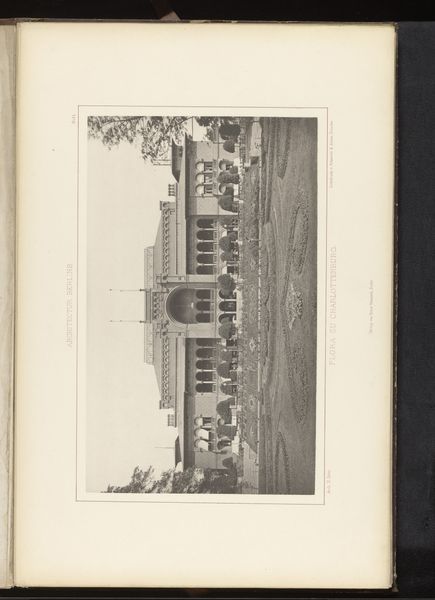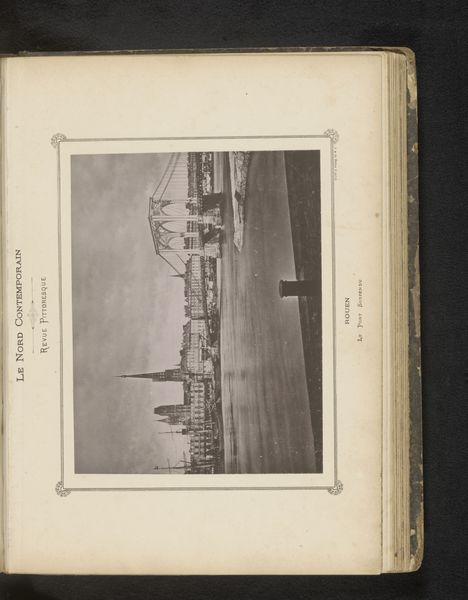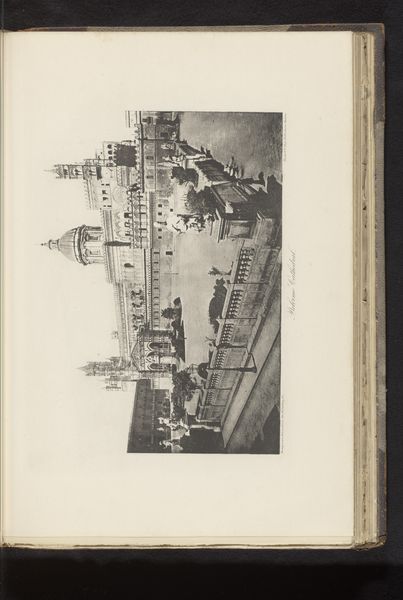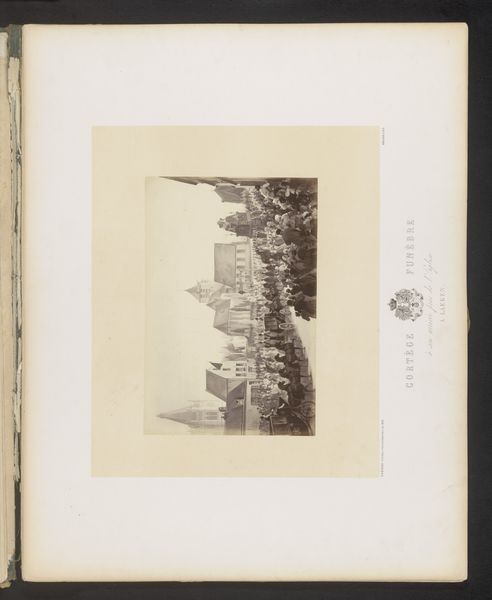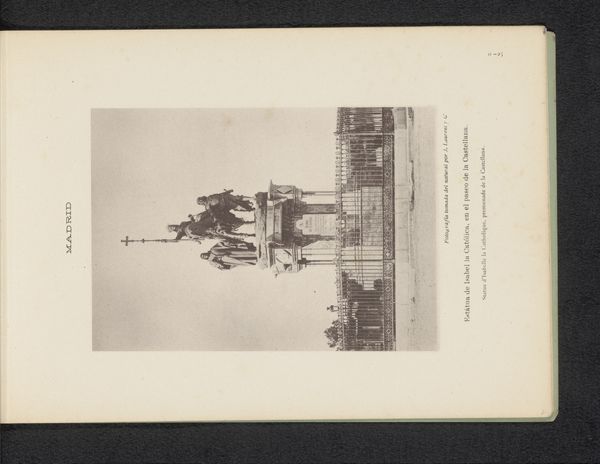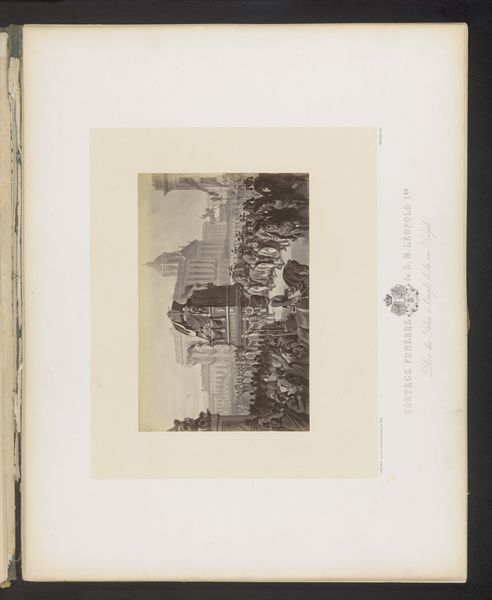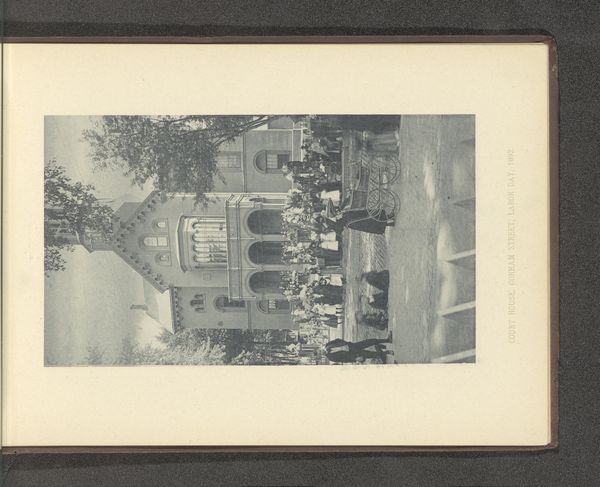
Gezicht op een plein in het Tunesische deel van de Wereldtentoonstelling van Antwerpen in 1894 1894
0:00
0:00
print, public-art, photography
#
african-art
# print
#
public-art
#
photography
#
orientalism
#
cityscape
#
islamic-art
Dimensions: height 153 mm, width 216 mm
Copyright: Rijks Museum: Open Domain
Editor: This is "View of a Square in the Tunisian Section of the World Exhibition of Antwerp in 1894" by Charles Bernhoeft. It's a photograph, probably a print too, depicting a cityscape. It feels incredibly staged, like a theater set. What was the role of these world expositions and photography’s place in them? Curator: World's fairs, like the one in Antwerp, were crucial stages for displaying and disseminating colonial power. This photograph, as a "view" of the Tunisian section, isn't just documentation; it's a curated representation of Tunisia for a Western audience. Note how the photographer positions the local population within this architectural setting. Editor: It definitely feels like constructing a narrative. A somewhat…romanticized one? How much did these images influence perceptions back then? Curator: Massively. Photography provided a seemingly objective lens through which European audiences could consume “exotic” cultures. However, it reinforced existing power dynamics and Orientalist fantasies. Did the subjects being photographed have any agency in how they were represented? Editor: Probably very little, if any. So it’s almost like Tunisia was being "performed" for the West. Curator: Precisely! These exhibitions weren't about genuine cultural exchange, but about asserting dominance. The architecture, the people, the framing - it's all carefully crafted for that purpose. Considering the photographer, what’s the relationship to Bernhoeft photographing Luxembourg royals too, how does that political agenda carry into photographs like these of "Tunisia?" Editor: Wow, that’s a perspective shift for me. I originally just saw a nice cityscape, but now I see a much deeper story about power and representation. Curator: Indeed. The image reflects less about Tunisia itself and more about the politics of its portrayal within a colonial framework. Recognizing the political work this photography performs reshapes how we appreciate the aesthetic.
Comments
No comments
Be the first to comment and join the conversation on the ultimate creative platform.
